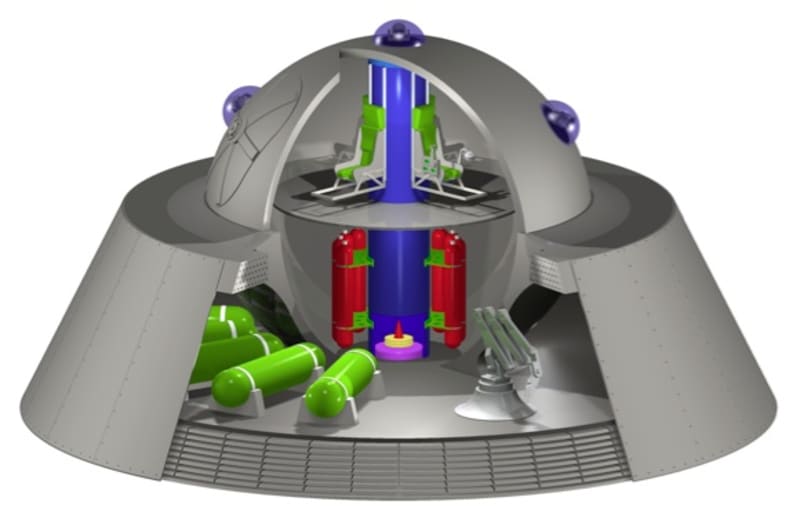This entry describes an electrogravitic reactionless propulsion system for space applications.
In February of 2015 two investigators from Brazil, Elio Porcelli and Victor Filho, presented a paper including theory and experimental results about anomalous forces on symmetrical capacitors when high voltage is applied to their conducting plates.
Utilizing a formula from Clausius-Mossotti and other developed for them, they found good accuracy between experimental and theoretical values.
The formula developed for the force generated by the capacitor is:
F =((0.102*er - 1)/(16*PI˄2*er + 2))*e0*A*E˄2
Where F is the force generated in Kgf, A is the area of the capacitor plate, er is the relative permittivity of the material,e0 is the dielectric constat of the vacuum and E is the electric field applied in the medium and PI is 3,1415.
For example they used a styrene monomer C8H8 and they found good accuracy between theory and the experiments:
Diameter=8cms
Thick= 1 mm
E0=8.85 e-12
Er=2.7
Voltage applied=7 KVolts
Then we have:
A=3.1415*((8/100)˄2)/4= 5 e-3 m2
E= 7000/0.001=7000000 Volts/m
Force = ((0.102*2.7-1)/(16*3.1415˄2*2.7))*8.85e-12 * 5 e-3*(7000000)˄2*1/100=3.68e-5 kgf
Force in KGF= 3,68e-5 Kgs
The Force in milligrams: 36,8 milligrams
In the case of a spaceship for example:
Diameter= 500 cms
Thick= 1 mm
Er= 8,37 for glass Pyrex
E0= 8,85 e-12
Voltage= 60 KV
Then:
Area= 3.1415*((5)˄2)/4=19.63 m2
E= 60000 Volts/ 0.001 mts= 60000000 V/m
The force generated will be:
Force= ((0.102*8,37-1)/(16*3.1415˄2*8,37))*8.85e-12 *19.63*(60000000)˄2= 0,691 kgf
This value is considering a capacitor with only one layer of dielectric.
The effect could be multiplied by several layers of capacitors.
For example with ten layers of capacitors the force will be ten times the calculated, around 69 Kgf. This is not a little force of continue impulse without losing mass of combustible.
It is several times greater than ionic propulsion or photonic propulsion.
The force generated for low k dielectrics will be not enough to let a take-off from the surface of the planet but will be useful for continuous propulsion in a space travel for instance.
The formula developed by Porcelli and Filho is only applicable for low k dielectrics.
This pack of capacitors it is easy of construct.
The top and bottom areas of the capacitor could be constructed with any electricity conductor material, like aluminum, copper, etc.
The dielectric in this example is Pyrex glass, easy to manufacture, but another dielectrics could be used, like Styrene, Kapton, Neoprene, Mylar, Bakelite, Barium Titanate or Barium Strontium Titanate.
I hope this work could be the seed for more people to experiment and investigate the anomalous forces developed in a flat symmetrical capacitor and could facilitate the space exploration in the future.
Aeronautical Engineer Luis Alberto Migliorero
Like this entry?
-
About the Entrant
- Name:Luis Alberto Migliorero
- Type of entry:individual
- Software used for this entry:computer program writed for myself
- Patent status:none

